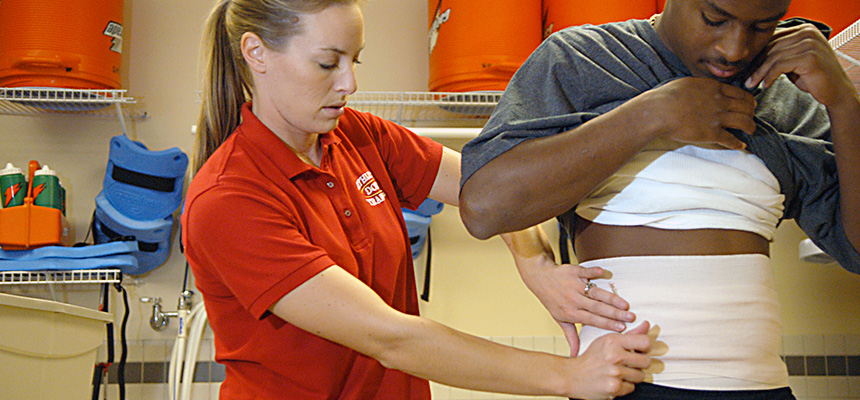
Athletic Training
Athletic training encompasses the prevention, examination, diagnosis, treatment and rehabilitation of injuries and medical conditions.
Become an AT
Interested in becoming an athletic trainer? Find resources and a list of accredited programs near you in the Student section.
Learn MoreJoin NATA
With all the perks and benefits of a membership with NATA, whether you are a student or athletic trainer, you can't afford to miss out!
There is no better time to become an athletic trainer.
The demand for athletic trainers across all practice settings is increasing, and the Bureau of Labor Statistics (BLS) estimates that the athletic training profession will grow 21% by 20221. There is tremendous opportunity for job growth in the secondary school setting as NATA advocates for the gold standard of at least one full time athletic trainer in each secondary school.
As parents, athletes, coaches and school administrators become more aware of the long term effects of concussion and injury, the importance of youth sports safety and the effectiveness of athletic trainers in prevention and rehabilitation, more schools are demanding full time athletic trainers to keep student athletes safe.
Additionally, health care reform has urged physician clinics and hospitals to pursue the most cost-effective means of patient care. By adding athletic trainers to staff, clinics and hospitals are able to capitalize on the clinical efficiencies of athletic trainers. ATs, when used effectively, can increase patient throughput, improve patient satisfaction and help the physician have a better work/life balance.
Athletic trainers continue to demonstrate their effectiveness in growing practice settings such as performing arts, military, public safety and occupational health. Athletic trainers keep injury rates down and keep employees healthy on the job, which is critical for these employers.
1 For more labor statistics about athletic training, visit the Bureau of Labor Statistics.
